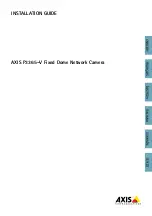
G.SHDSL NTU User Manual V0.03
83
Setup E1 Parameter, Line Code
The G.SHDSL NTU supports two different line codes: HDB3 and AMI.
HDB3 is the most popular and preferred line coding and is also the default setting.
AMI line coding is also selectable.
HDB3
In this line coding, the transmitter substitutes a deliberate bipolar violation when excessive
zeros in the data stream are detected. The receiver recognizes these special violations and
decodes them as zeros. This method enables the network to minimum pulse density
requirements. Unless AMI is required for your application, HDB3 should be used whenever
possible.
AMI
Alternate Mark Inversion defines a pulses as a “mark,” a binary one as, as opposed to a
zero. In an E1 network connection, signals are transmitted as a sequence of one and zero.
One is sent as pulse, and zero is sent as spaces, i.e. no pulse. Every other pulse is inverted
from the previous pulse in polarity, so that the signal can be effectively transmitted. This
means, however, that a long sequence of zero in data stream will cause problems, since
the NTU receiving the signal relies on the signal to recover the 2048kbps clock.
Summary of Contents for G.SHDSL NTU
Page 1: ...G SHDSL NTU User Manual Version 0 03...
Page 9: ...G SHDSL NTU User Manual V0 03 8 1 4 Applications...
Page 30: ...G SHDSL NTU User Manual V0 03 29 E1 Interface...
Page 52: ...G SHDSL NTU User Manual V0 03 51...
Page 55: ...G SHDSL NTU User Manual V0 03 54...
Page 117: ...G SHDSL NTU User Manual V0 03 116 For E1 and Ethernet interface model...
Page 119: ...G SHDSL NTU User Manual V0 03 118 For Serial interface model For Ethernet interface model...
















































